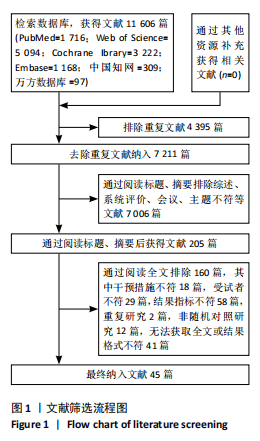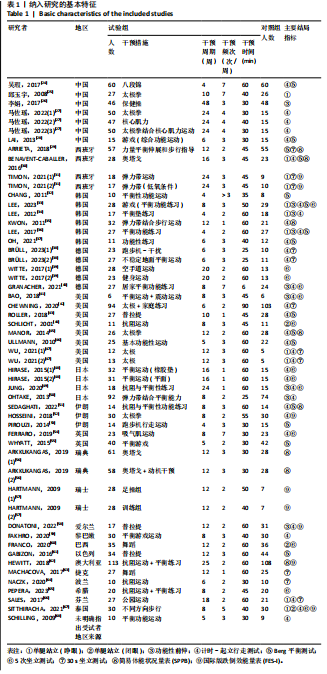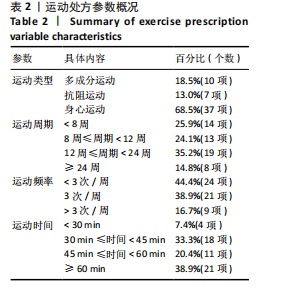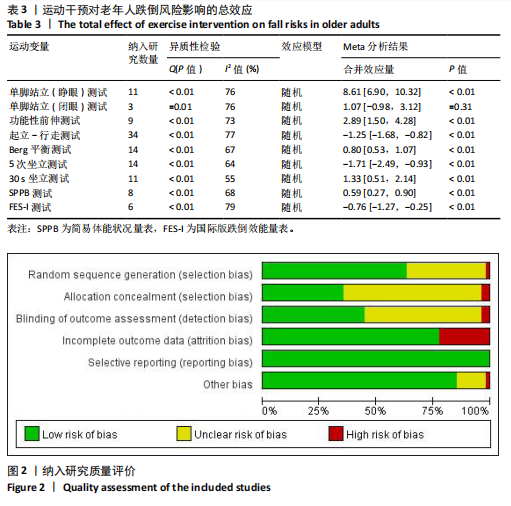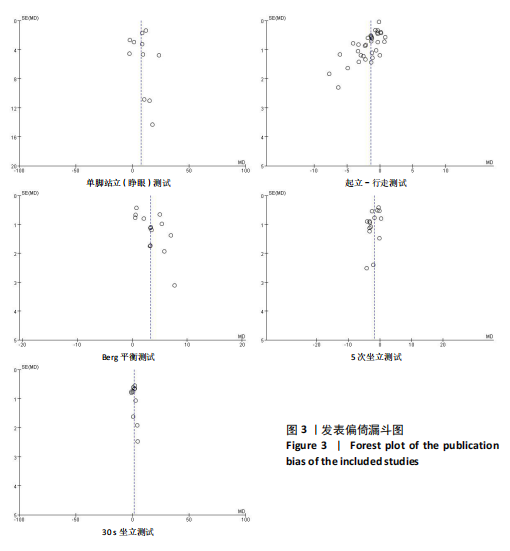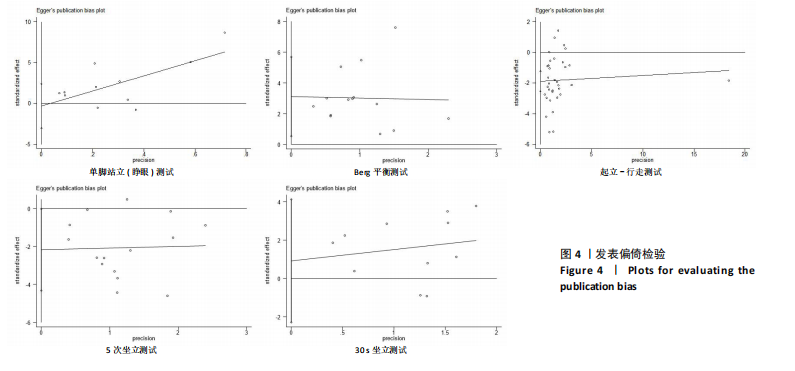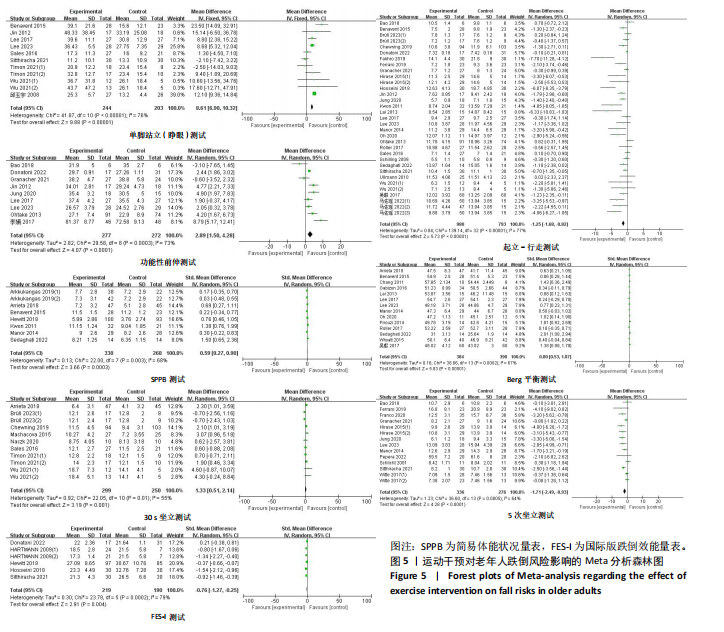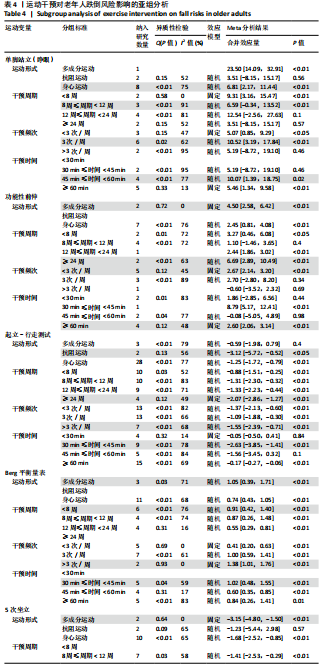[1] FEDER G, CRYER C, DONOVAN S, et al. Guidelines for the prevention of falls in people over 65. The Guidelines’ Development Group. BMJ. 2000;321(7267): 1007-1011.
[2] WORLD HEALTH ORGANIZATION. Falls. [2024-01-22]. https: //www. Who.int /news-room/factsheets/detail /falls.
[3] KANNUS P, SIEVÄNEN H, PALVANEN M, et al. Prevention of falls and consequent injuries in elderly people. Lancet. 2005; 366(9500):1885-1893.
[4] STEVENS JA, CORSO PS, FINKELSTEIN EA, et al. The costs of fatal and non-fatal falls among older adults. Inj Prev. 2006;12(5): 290-295.
[5] KWAN MM, CLOSE JC, WONG AK, et al. Falls incidence, risk factors, and consequences in Chinese older people: a systematic review. J Am Geriatr Soc. 2011;59(3):536-543.
[6] DELBAERE K, CLOSE JC, HEIM J, et al. A multifactorial approach to understanding fall risk in older people. J Am Geriatr Soc. 2010;58(9):1679-1685.
[7] SHERRINGTON C, MICHALEFF ZA, FAIRHALL N, et al. Exercise to prevent falls in older adults: an updated systematic review and meta-analysis. Br J Sports Med. 2017; 51(24):1750-1758.
[8] SHERRINGTON C, TIEDEMANN A, FAIRHALL N, et al. Exercise to prevent falls in older adults: an updated meta-analysis and best practice recommendations. N S W Public Health Bull. 2011;22(3-4):78-83.
[9] HOPEWELL S, COPSEY B, NICOLSON P, et al. Multifactorial interventions for preventing falls in older people living in the community: a systematic review and meta-analysis of 41 trials and almost 20 000 participants. Br J Sports Med. 2020;54(22):1340-1350.
[10] 郭静霞,陈亮,余启超,等.运动对预防老年人跌倒效果的网状Meta分析[J].中国康复理论与实践,2021,27(5):563-573.
[11] 胡慧秀,赵雅洁,孙超.老年人失能预防运动干预临床实践指南(2023版)[J].中国全科医学,2023,26(22):2695-2710+2714.
[12] 祝莉,王正珍,朱为模.健康中国视域中的运动处方库构建[J].体育科学,2020, 40(1):4-15.
[13] MONTERO-ODASSO M, VAN DER VELDE N, MARTIN FC, et al. World guidelines for falls prevention and management for older adults: a global initiative. Age Ageing. 2022;51(9):afac205.
[14] PAGE MJ, MCKENZIE JE, BOSSUYT PM, et al. The PRISMA 2020 statement: an updated guideline for reporting systematic reviews. BMJ. 2021;372:n71.
[15] SPRINGER BA, MARIN R, CYHAN T, et al. Normative values for the unipedal stance test with eyes open and closed. J Geriatr Phys Ther. 2007;30(1):8-15.
[16] DUNCAN PW, WEINER DK, CHANDLER J, et al. Functional reach: a new clinical measure of balance. J Gerontol. 1990;45(6): M192-M197.
[17] PODSIADLO D, RICHARDSON S. The timed “Up & Go”: a test of basic functional mobility for frail elderly persons. J Am Geriatr Soc. 1991;39(2):142-148.
[18] PARK SH, LEE YS. The Diagnostic Accuracy of the Berg Balance Scale in Predicting Falls. West J Nurs Res. 2017;39(11):1502-1525.
[19] CSUKA M, MCCARTY DJ. Simple method for measurement of lower extremity muscle strength. Am J Med. 1985;78(1):77-81.
[20] JONES CJ, RIKLI RE, BEAM WC. A 30-s chair-stand test as a measure of lower body strength in community-residing older adults. Res Q Exerc Sport. 1999;70(2):113-119.
[21] GURALNIK JM, SIMONSICK EM, FERRUCCI L, et al. A short physical performance battery assessing lower extremity function: association with self-reported disability and prediction of mortality and nursing home admission. J Gerontol. 1994;49(2): M85-M94.
[22] YARDLEY L, BEYER N, HAUER K, et al. Development and initial validation of the Falls Efficacy Scale-International (FES-I). Age Ageing. 2005;34(6):614-619.
[23] Chapter 8: Assessing risk of bias in a randomized trial [2024-01-22]. https://training.cochrane.org/handbook/current/chapter-08.
[24] 吴瑕,薛武更,方静,等.八段锦锻炼干预社区老年人跌倒风险60例[J].中国中医药现代远程教育,2017,15(3):106-109.
[25] 邱玉宇,崔焱.太极拳锻炼对防止老年人跌倒作用机制的研究[J].护理研究, 2008,22(6):490-491.
[26] 李娟,赵庆华,邓洪波,等.护养中心老年人防跌倒保健操训练的效果[J].护理学杂志,2017,32(11):67-69.
[27] 马佐瑶,马海滨,杨小燕,等.核心肌力联合太极拳运动对老年人步行能力及跌倒风险的影响[J].宁夏医学杂志,2022, 44(3):237-240.
[28] LAI CH, PENG CW, CHEN YL, et al. Effects of interactive video-game based system exercise on the balance of the elderly. Gait Posture. 2013;37(4):511-515.
[29] ARRIETA H, REZOLA-PARDO C, ZARRAZQUIN I, et al. A multicomponent exercise program improves physical function in long-term nursing home residents: A randomized controlled trial. Exp Gerontol. 2018;103:94-100.
[30] BENAVENT-CABALLER V, ROSADO-CALATAYUD P, SEGURA-ORTÍ E, et al. The effectiveness of a video-supported group-based Otago exercise programme on physical performance in community-dwelling older adults: a preliminary study. Physiotherapy. 2016;102(3):280-286.
[31] TIMON R, CAMACHO-CARDEÑOSA M, GONZÁLEZ-CUSTODIO A, et al. Effect of hypoxic conditioning on functional fitness, balance and fear of falling in healthy older adults: a randomized controlled trial. Eur Rev Aging Phys Act. 2021;18(1):25.
[32] CHANG M, HUANG YH, JUNG H. The Effectiveness of the Exercise Education Programme on Fall Prevention of the Community-dwelling Elderly: A Preliminary Study. Hong Kong J Occup Ther. 2011;21(2): 56-63.
[33] LEE K. Home-Based Exergame Program to Improve Physical Function, Fall Efficacy, Depression and Quality of Life in Community-Dwelling Older Adults: A Randomized Controlled Trial. Healthcare (Basel). 2023;11(8):1109.
[34] LEE KJ, KIM SH, SONG CH. Balance Exercise Program Using Training Mats Improves the Postural Balance of Elderly Individuals: A Randomized Controlled Trial. J Korean Phys Soc. 2012; 24(3): 223-228.
[35] KWON MS. Effects of a fall prevention program on physical fitness and psychological functions in community dwelling elders. J Korean Acad Nurs. 2011; 41(2):165-174.
[36] LEE K, LEE YW. Efficacy of ankle control balance training on postural balance and gait ability in community-dwelling older adults: a single-blinded, randomized clinical trial. J Phys Ther Sci. 2017;29(9):1590-1595.
[37] OH DS, CHOI JD. Effects of Motor Imagery Training on Balance and Gait in Older Adults: A Randomized Controlled Pilot Study. Int J Environ Res Public Health. 2021;18(2):650.
[38] BRÜLL L, HEZEL N, ARAMPATZIS A, et al. Comparing the Effects of Two Perturbation-Based Balance Training Paradigms in Fall-Prone Older Adults: A Randomized Controlled Trial. Gerontology. 2023;69(7):910-922.
[39] WITTE K, EMMERMACHER P, PLISKE G. Improvement of Balance and General Physical Fitness in Older Adults by Karate: A Randomized Controlled Trial. Complement Med Res. 2017;24(6):390-393.
[40] GRANACHER U, MUEHLBAUER T, GÖSTEMEYER G, et al. The performance of balance exercises during daily tooth brushing is not sufficient to improve balance and muscle strength in healthy older adults. BMC Geriatr. 2021;21(1):257.
[41] BAO T, CARENDER WJ, KINNAIRD C, et al. Effects of long-term balance training with vibrotactile sensory augmentation among community-dwelling healthy older adults: a randomized preliminary study. J Neuroeng Rehabil. 2018;15(1):5.
[42] CHEWNING B, HALLISY KM, MAHONEY JE, et al. Disseminating Tai Chi in the Community: Promoting Home Practice and Improving Balance. Gerontologist. 2020;60(4):765-775.
[43] ROLLER M, KACHINGWE A, BELING J, et al. Pilates Reformer exercises for fall risk reduction in older adults: A randomized controlled trial. J Bodyw Mov Ther. 2018; 22(4):983-998.
[44] SCHLICHT J, CAMAIONE DN, OWEN SV. Effect of intense strength training on standing balance, walking speed, and sit-to-stand performance in older adults. J Gerontol A Biol Sci Med Sci. 2001;56(5):M281-286.
[45] MANOR B, LOUGH M, GAGNON MM, et al. Functional benefits of tai chi training in senior housing facilities. J Am Geriatr Soc. 2014;62(8):1484-1489.
[46] ULLMANN G, WILLIAMS HG, HUSSEY J, et al. Effects of Feldenkrais exercises on balance, mobility, balance confidence, and gait performance in community-dwelling adults age 65 and older. J Altern Complement Med. 2010;16(1):97-105.
[47] WU Y, SENK C, COLL P, et al. A comparison of two Tai Chi interventions tailored for different health outcomes. Complement Ther Med. 2021;59:102731.
[48] HIRASE T, INOKUCHI S, MATSUSAKA N, et al. Effects of a balance training program using a foam rubber pad in community-based older adults: a randomized controlled trial. J Geriatr Phys Ther. 2015;38(2):62-70.
[49] JUNG H, MIKI Y, TANAKA R, et al. The Effects of a Multicomponent Lower Extremity Training Technique on Physical Function in Healthy Older Adults: A Randomized Controlled Trial. Gerontol Geriatr Med. 2020;6:2333721420935702.
[50] OHTAKE M, MORIKAGI Y, SUZUKI I, et al. Effects of exercise on the prevention of conditions leading to the need for long-term care. Aging Clin Exp Res. 2013;25(1):49-57.
[51] SEDAGHATI P, GOUDARZIAN M, AHMADABADI S, et al. The impact of a multicomponent-functional training with postural correction on functional balance in the elderly with a history of falling. J Exp Orthop. 2022;9(1):23.
[52] HOSSEINI L, KARGOZAR E, SHARIFI F, et al. Tai Chi Chuan can improve balance and reduce fear of falling in community dwelling older adults: a randomized control trial. J Exerc Rehabil. 2018;14(6):1024-1031.
[53] PIROUZI S, MOTEALLEH AR, FALLAHZADEH F, et al. Effectiveness of treadmill training on balance control in elderly people: a randomized controlled clinical trial. Iran J Med Sci. 2014;39(6):565-570.
[54] FERRARO FV, GAVIN JP, WAINWRIGHT T, et al. The effects of 8 weeks of inspiratory muscle training on the balance of healthy older adults: a randomized, double-blind, placebo-controlled study. Physiol Rep. 2019;7(9):e14076.
[55] WHYATT C, MERRIMAN NA, YOUNG WR, et al. A Wii Bit of Fun: A Novel Platform to Deliver Effective Balance Training to Older Adults. Games Health J. 2015;4(6):423-433.
[56] ARKKUKANGAS M, SÖDERLUND A, ERIKSSON S, et al. Fall Preventive Exercise With or Without Behavior Change Support for Community-Dwelling Older Adults: A Randomized Controlled Trial With Short-Term Follow-up. J Geriatr Phys Ther. 2019; 42(1):9-17.
[57] HARTMANN A, MURER K, DE BIE RA, et al. The effect of a foot gymnastic exercise programme on gait performance in older adults: a randomised controlled trial. Disabil Rehabil. 2009;31(25):2101-2110.
[58] DONATONI DA SILVA L, SHIEL A, MCINTOSH C. Effects of Pilates on the risk of falls, gait, balance and functional mobility in healthy older adults: A randomised controlled trial. J Bodyw Mov Ther. 2022;30:30-41.
[59] FAKHRO MA, HADCHITI R, AWAD B. Effects of Nintendo Wii fit game training on balance among Lebanese older adults. Aging Clin Exp Res. 2020;32(11):2271-2278.
[60] FRANCO MR, SHERRINGTON C, TIEDEMANN A, et al. Effect of Senior Dance (DanSE) on Fall Risk Factors in Older Adults: A Randomized Controlled Trial. Phys Ther. 2020;100(4):600-608.
[61] GABIZON H, PRESS Y, VOLKOV I, et al. The Effects of Pilates Training on Balance Control and Self-Reported Health Status in Community-Dwelling Older Adults: A Randomized Controlled Trial. J Aging Phys Act. 2016;24(3):376-383.
[62] HEWITT J, GOODALL S, CLEMSON L, et al. Progressive Resistance and Balance Training for Falls Prevention in Long-Term Residential Aged Care: A Cluster Randomized Trial of the Sunbeam Program. J Am Med Dir Assoc. 2018;19(4):361-369.
[63] MACHACOVA K, VANKOVA H, VOLICER L, et al. Dance as Prevention of Late Life Functional Decline Among Nursing Home Residents. J Appl Gerontol. 2017; 36(12):1453-1470.
[64] NACZK M, MARSZALEK S, NACZK A. Inertial Training Improves Strength, Balance, and Gait Speed in Elderly Nursing Home Residents. Clin Interv Aging. 2020;15:177-184.
[65] PEPERA G, KRINTA K, MPEA C, et al. Randomized Controlled Trial of Group Exercise Intervention for Fall Risk Factors Reduction in Nursing Home Residents. Can J Aging. 2023;42(2):328-336.
[66] SALES M, POLMAN R, HILL KD, et al. A Novel Exercise Initiative for Seniors to Improve Balance and Physical Function. J Aging Health. 2017;29(8):1424-1443.
[67] SITTHIRACHA P, EUNGPINICHPONG W, CHATCHAWAN U. Effect of Progressive Step Marching Exercise on Balance Ability in the Elderly: A Cluster Randomized Clinical Trial. Int J Environ Res Public Health. 2021; 18(6):3146.
[68] SCHILLING BK, FALVO MJ, KARLAGE RE, et al. Effects of unstable surface training on measures of balance in older adults. J Strength Cond Res. 2009;23(4):1211-1216.
[69] MILLER KJ, GONÇALVES-BRADLEY DC, AREEROB P, et al. Comparative effectiveness of three exercise types to treat clinical depression in older adults: A systematic review and network meta-analysis of randomised controlled trials. Ageing Res Rev. 2020;58:100999.
[70] HUANG X, ZHAO X, LI B, et al. Comparative efficacy of various exercise interventions on cognitive function in patients with mild cognitive impairment or dementia: A systematic review and network meta-analysis. J Sport Health Sci. 2022;11(2):212-223.
[71] PIERCY KL, TROIANO RP, BALLARD RM, et al. The Physical Activity Guidelines for Americans. JAMA. 2018;320(19):2020-2028.
[72] SHERRINGTON C, FAIRHALL NJ, WALLBANK GK, et al. Exercise for preventing falls in older people living in the community. Cochrane Database Syst Rev. 2019;1(1): CD012424.
[73] MCCARNEY R, WARNER J, ILIFFE S, et al. The Hawthorne Effect: a randomised, controlled trial. BMC Med Res Methodol. 2007;7:30.
[74] 王志灼,谷莉,周谋望.中国老年人跌倒风险因素识别及评估工具应用的研究进展[J].中国康复医学杂志,2021,36(11): 1440-1444.
[75] 陈洪萍,杨小丽,张菁,等.2018年内江市社区老年人跌倒情况及其危险因素分析[J].预防医学情报杂志,2020,36(2): 224-228.
[76] HUANG Y, LIU X. Improvement of balance control ability and flexibility in the elderly Tai Chi Chuan (TCC) practitioners: a systematic review and meta-analysis. Arch Gerontol Geriatr. 2015;60(2):233-238.
[77] CLEMSON L, FIATARONE SINGH MA, BUNDY A, et al. Integration of balance and strength training into daily life activity to reduce rate of falls in older people (the LiFE study): randomised parallel trial. BMJ. 2012;345:e4547.
[78] CLEGG A, BARBER S, YOUNG J, et al. The Home-based Older People’s Exercise (HOPE) trial: a pilot randomised controlled trial of a home-based exercise intervention for older people with frailty. Age Ageing. 2014; 43(5):687-695.
[79] LESINSKI M, HORTOBÁGYI T, MUEHLBAUER T, et al. Effects of Balance Training on Balance Performance in Healthy Older Adults: A Systematic Review and Meta-analysis. Sports Med. 2015;45(12):
1721-1738.
[80] RIVA D, MAMO C, FANÌ M, et al. Single stance stability and proprioceptive control in older adults living at home: gender and age differences. J Aging Res. 2013;2013:561695.
[81] LIMA CA, RICCI NA, NOGUEIRA EC, et al. The Berg Balance Scale as a clinical screening tool to predict fall risk in older adults: a systematic review. Physiotherapy. 2018;104(4):383-394.
[82] FYFE JJ, HAMILTON DL, DALY RM. Minimal-Dose Resistance Training for Improving Muscle Mass, Strength, and Function: A Narrative Review of Current Evidence and Practical Considerations. Sports Med. 2022;52(3):463-479.
[83] GRANACHER U, ZAHNER L, GOLLHOFER A. Strength, power, and postural control in seniors: Considerations for functional adaptations and for fall prevention. Eur J Sport Sci. 2008;8(6):325-340.
[84] KIRKENDALL DT, GARRETT WE JR. The effects of aging and training on skeletal muscle. Am J Sports Med. 1998;26(4):598-602.
[85] LIU TW, NG GYF, CHUNG RCK, et al. Cognitive behavioural therapy for fear of falling and balance among older people: a systematic review and meta-analysis. Age Ageing. 2018;47(4):520-527.
[86] KRUISBRINK M, CRUTZEN R, KEMPEN GIJM, et al. Disentangling interventions to reduce fear of falling in community-dwelling older people: a systematic review and meta-analysis of intervention components. Disabil Rehabil. 2022;44(21):6247-6257.
[87] FREIBERGER E, HÄBERLE L, SPIRDUSO WW, et al. Long-term effects of three multicomponent exercise interventions on physical performance and fall-related psychological outcomes in community-dwelling older adults: a randomized controlled trial. J Am Geriatr Soc. 2012; 60(3):437-446.
[88] FRÄNDIN K, GRÖNSTEDT H, HELBOSTAD JL, et al. Long-Term Effects of Individually Tailored Physical Training and Activity on Physical Function, Well-Being and Cognition in Scandinavian Nursing Home Residents: A Randomized Controlled Trial. Gerontology. 2016;62(6):571-580.
|
